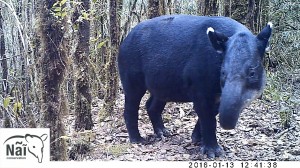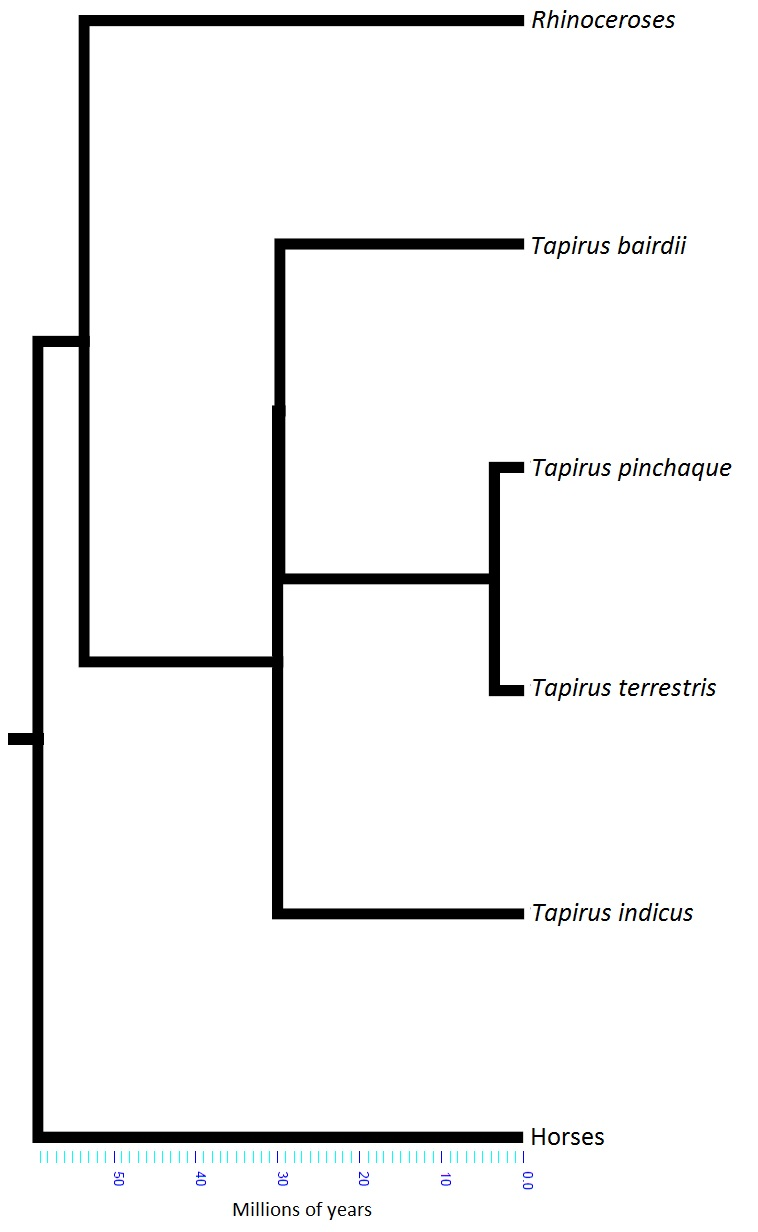
The basics
Tapirs are large, herbivorous mammals with prehensile snouts that can move in all directions. 
Species
There are four species of tapir: Baird’s tapir (Tapirus bairdii), Brazilian tapir (Tapirus terrestris), and the mountain tapir (Tapirus pinchaque), which are distributed across South and Central America; and the Malayan tapir (Tapirus indicus), which is found in Southeast Asia. The existence of a possible fifth species of tapir, Tapirus kabomani from South America, is currently debated by scientists.
Evolution
The Malayan tapir diverged around 30 million years ago and is very evolutionarily distinct from the American tapirs; the two are as closely related as we are to baboons! Though they superficially resemble pigs, tapirs are actually most closely related to rhinoceroses. Tapirs diverged from rhinos around 50 million years ago, and the ancestor of tapirs and rhinos diverged from horses almost ten million years before that.
Threats
All four species are considered either Endangered or Vulnerable by IUCN Red List, and are under threat from deforestation and habitat fragmentation, hunting pressures, and disease from livestock. Consequently, an entire lineage of EDGE species, comprising a large branch of the tree of life, is threatened with extinction within our lifetime. The extinction of these four tapir species would represent a loss of around 120 million years of independent evolutionary history; this is equivalent to losing over 50 of the least evolutionary distinct mammal species!
EDGE’s tapir conservation efforts
EDGE Fellow Esteban Brenes-Mora is working in his homeland, Costa Rica, to improve the conservation status of Baird’s tapir, the largest land mammal in Central America. Esteban is using camera traps and other signs of their presence to determine the distribution of tapirs in the Cordillera de Talamanca mountain range, which is bisected by the Pan American Highway. This highway causes alarming levels of collisions with tapirs, and it is feared it may form a barrier tapirs are unable to cross. Esteban hopes to apply his habitat use data to identify priority areas of the highway along which to implement mitigation measures to reduce roadkill of tapirs in the region.

This work, combined with Esteban’s community outreach activities to improve the local population’s awareness and involvement in the conservation of tapirs in the area, has the potential to make a huge difference in the future of tapirs in the region. Esteban and his team at Nai Conservation have produced a video, below, detailing their work.
